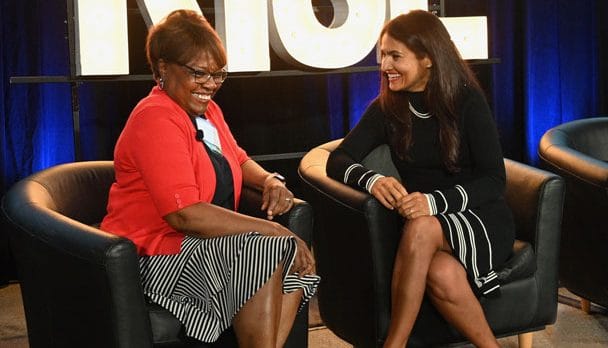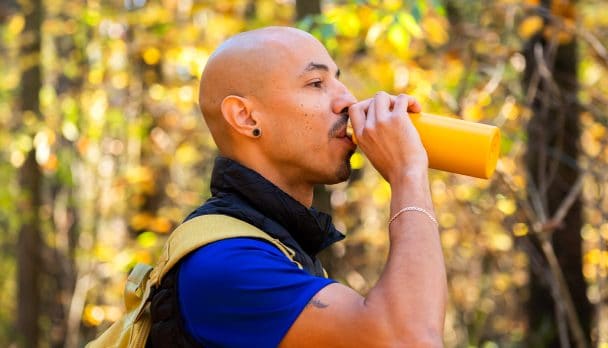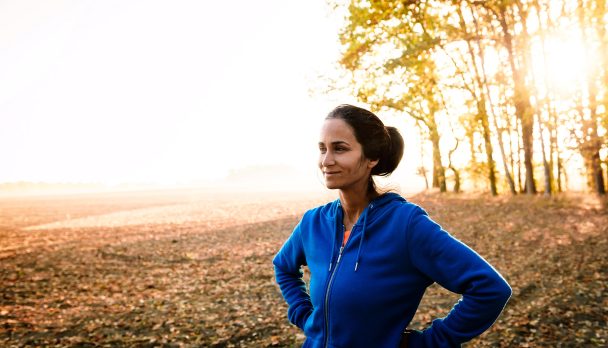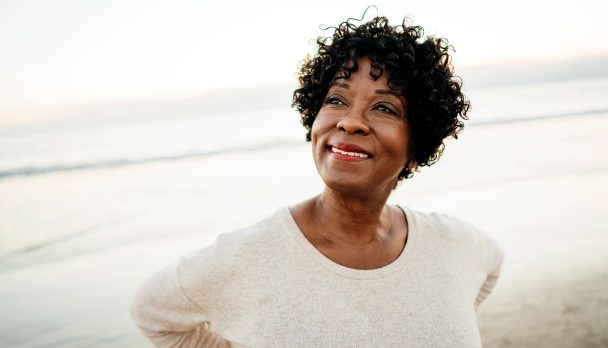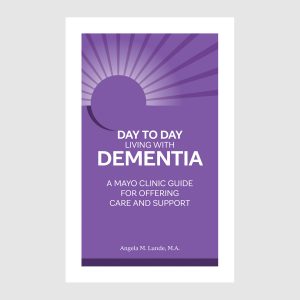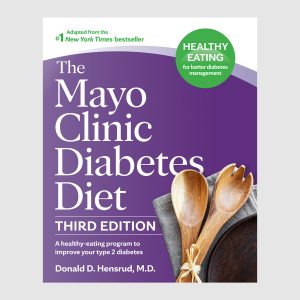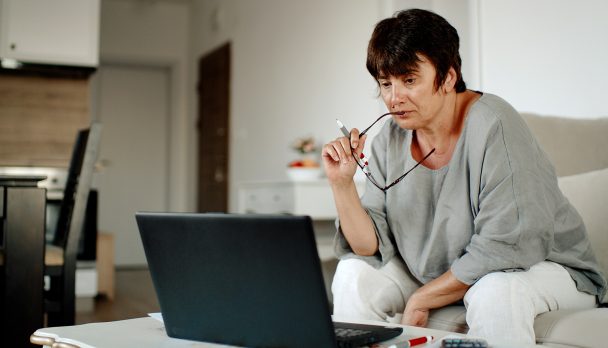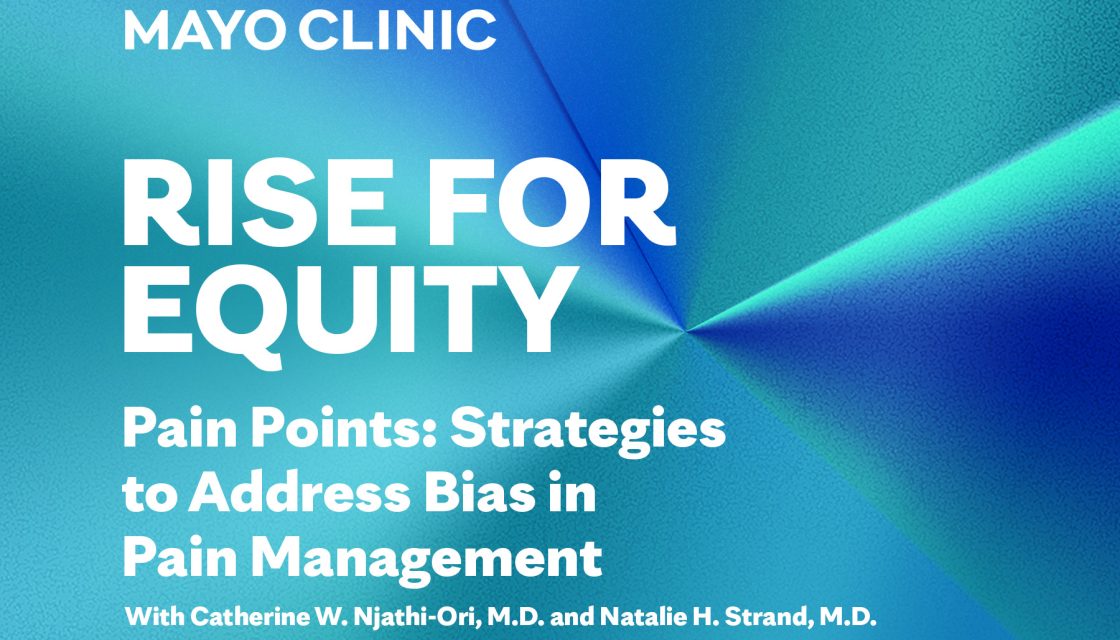
“On a scale of 1 to 10, what’s your pain?” If you’ve just broken a bone or are seeking treatment for endomitosis, it’s likely the first question you’ll be asked. But what if your pain is dismissed or minimized due to your age, race, or gender? In this episode of the RISE for Equity podcast, host Nicole Nfonoyim-Hara unpacks the latest evidence around bias in pain management—and effective strategies for a holistic approach to care—with Mayo Clinic physicians Catherine Njathi-Ori and Natalie Strand.
“We need to be humble as providers, because there definitely will be cultural influences on how patients are going to respond to how they’re feeling…. While we have the visual and the numeric skills, we have to acknowledge that pain is more complex.”
Catherine Njathi-Ori, M.D.
Guests:
Catherine W. Njathi-Ori, M.D., is an anesthesiologist specializing in acute pain management based in Rochester, Minnesota.
Natalie H. Strand, M.D., is an Associate Professor in the Department of Anesthesiology, Division of Pain Medicine. She serves as the Director of Pain Research and the Director of Neuromodulation for Mayo Clinic Arizona.
“People I think are well-meaning in medicine for the most part. I really believe that. But just because you’re well-meaning doesn’t mean you’re not biased. People often can’t see their own blind spots. When you don’t have diversity in your division or department, or you don’t have diversity on your admissions committees, or you don’t have diversity in your surgical teams and anesthesia teams, how is anybody supposed to see their own blind spots?”
Nathalie H. Strand, M.D.
Read the transcript:
Nicole Nfonoyim-Hara: Welcome to the “Rise for Equity” podcast. In this series, we’ll be talking to leading physicians, scientists, and innovators about what it’s going to take to transform healthcare for a more equitable future.
I’m Nicole Nfonoyim-Hara, your host on the “Rise for Equity” podcast. Today, I’m joined by two Mayo Clinic physicians, Dr. Natalie Strand, who is an anesthesiologist specializing in pain medicine, and Dr. Catherine Njathi-Ori, who is an anesthesiologist specializing in acute pain management. Together we’re discussing bias in pain management for patients with marginalized identities, methods of measuring pain, and what the medical community is doing to ensure everyone’s pain is taken seriously. Welcome to the podcast.
Catherine Njathi-Ori: Thank you.
Nicole Nfonoyim-Hara: Dr. Njathi-Ori, can you talk about the historical context for differences in treating pain from marginalized communities?
Catherine Njathi-Ori: My experience in pain has been a little bit more limited since the time I’ve been working in medicine, but eEven when you look at the origin of pain assessment, pain therapy, in the last probably 20 to 30 years, there has been more evidence in terms of understanding pain.
Unfortunately, most research has always been based on criteria selection that did not include marginalized communities. You’d have a lot of research that was based on the recruited candidates who are majority white male, and then trying to apply the findings to the general population. In many cases the findings will not apply to the general population, and I think just like any other thing in medicine, the history of patients being marginalized in terms of care also translates into pain medication.
We know that different patients would respond differently to pain medication, to pain assessment in terms of their social and cultural influences that might not have been taken into account that we now know are important. There’s evidence and studies that have shown how there is, discrimination:, on how pain management is offered to different communities whether this is based on age, race, socioeconomic status or other identities.
There’s a strong history of, we know what is working, but it’s not being offered to everyone in the same way. Some of the strongest barriers to this, if you want to call that language barrier, communication barriers, misunderstanding each other’s culture, how we express our pain, how we are expected to behave when we’re in pain.
So the issue becomes, how are we applying the knowledge that we have to the various communities? Dr. Strand, if you want to add something to that.
Natalie Strand: I would just like to support everything you said. It’s very complicated when you think about the historical context for pain treatment disparities. I’ll often say, for a long time in medicine, we studied White men and just assumed everybody else was the same.
Historically, if you look at pain treatment disparities, all kinds of marginalized communities have had this lack of access, lack of equitable treatment, racial and ethnic minorities, LGBTQ plus individuals, lower socioeconomic status, and it comes from various factors. It’s systemic racism, it’s discrimination, it’s socioeconomic inequalities, cultural biases, lack of cultural humility on the physician and the healthcare side within healthcare systems and, there’s been a lot of traumas. It’s really pervasive and complex.
Nicole Nfonoyim-Hara: Thank you both for sharing that very pervasive and complex situation. We’re going to talk a little bit more specifically around race and gender, as well as elder care. But before we get to that, I’d love to hear your thoughts as professionals in the field about how providers are currently measuring or assessing pain for patients.
Natalie Strand: I’m a chronic pain physician. Pain is currently assessed very poorly. On your intake form, there’s a scale of one to 10 saying, “what’s your scale?” That’s called the VAS scale, or the Visual Analog Scale.
That’s by far the most common. Scale of 1 to 10, what’s your pain? Self-reported. There are other things that people can do. There’s all kinds of scales for people, like if you’re non-verbal, there’s a scale of faces, if you have communication barriers, there’s grimaces scale, you can watch vital signs, you can watch facial expressions, you can watch pain behaviors.
Like we said earlier, the tools are there. There’s very wonderful, validated measurement tools that will ask how much your function is limited, how much your mental health is affected, your psychological well– being is affected. Those are very underutilized. What we typically see is what’s your pain on a scale of one to 10 and that’s the least accurate, least informative, but it’s the fastest and the most commonly used.
Catherine Njathi-Ori: I would agree. I’m mostly in acute pain because I’m an anesthesiologist working in the operating room, and I agree. We do have these scales, which are very helpful when used correctly. If you have a five-year-old child, it’s hard for them to describe how they’re feeling, and you can show them a visual scale and say, point to the image that shows how you feel. That gives you an idea. As Dr. Strand talked about the previous question, part of it is acknowledging that we need to be humble as providers also, because there definitely will be cultural influences on how patients are going to respond to how they’re feeling.
So, for instance, you would see a patient who has had either a major procedure, or maybe they’re coming in with a broken bone.
You expect them to be in pain, but maybe let’s say this is an African man. In his culture he’s supposed to be the strong one. He’s not going to be showing pain, even though you know they are in pain. That’s why cultural awareness and competence is very important because you also have to consider other factors.
So, while we have the visual and the numeric skills, we have to acknowledge that pain is more complex.
Nicole Nfonoyim-Hara: I am going to lean on you to bring some more data into the conversation here and we’re going to start with gender here and Dr. Strand, you spoke about your focus on gender earlier, and I have some information here about a study of 981 patients, that in that study, women with pain were less likely to receive analgesia and 10 percent less likely to receive opiates than men. Can you talk a little bit about how patients are experiencing bias around pain management specifically around gender?
Natalie Strand: Thank you for asking that question. It’s such a huge problem. Luckily, I think there’s a little bit of a media focus on this right now with what’s been happening, and hundreds of women getting procedures without any opioids at all. I don’t know if everybody’s aware of this story.
Women were having fertility procedures, complaining of pain and doctors were basically saying: “well, you got your pain meds,’ but turns out one of the nurses was diverting the fentanyl so the patients weren’t getting any of the opioids, but I think what that really highlighted was that, listen, a woman can be saying I am in pain, and obviously have total awareness, they’re not sedated, they’re not having any problems with their oxygenation or vital signs, and being denied pain medicine because they’re not believed.
So, I think the issue of gender bias and pain medicine is that it’s pervasive. It’s awful. If we look in the anesthesia side and the perioperative treatment side, just look at certain procedures that are not offered. Analgesia, you know this is a procedure, but because it’s in a woman, you may be having an IUD placed or removed.
You’re not going to get anesthesia for that. Why? It’s very painful. I think it’s really multifactorial. We’ve talked about a little bit already in this podcast. I think some people think, because of historical or cultural biases, that women are just over-complaining, or women are hysterical.
The data shows us that if two identical patients are presenting with pain, and one’s a man and one’s a woman, the woman is less likely to get pain meds. The woman is more likely to be referred for psychological help or cognitive behavioral therapy, and the pain is most likely to be attributed to a non-organic cause. There was a huge study that even looked at who was offered surgery, for example.
It’s not just like you get a little bit less pain med. Women had more surgical opportunities for knee replacement, higher severity of pain, more pathology on imaging, and were offered surgical intervention at a third of the rate as the men were.
There’s this systematic mistreatment of offering women, not only pain control, but even just advanced procedures. It looks differently. It looks like going to the emergency room and one person getting opioid-type medication and another one not. It looks like showing up to your outpatient doctor and getting referred to a specialist for further workup of your pain, or just being told to go home and deal with it.
It looks like getting more diagnostic studies versus not. There’s a lot of ways beyond: “I’m in pain. What do I do?” People with endometriosis, for example, or complex regional pain syndrome can go years without getting a diagnosis, often because they’re not believed, and then what does that do to the patient?
They don’t feel like there’s a home for them in the medical system. They don’t feel like there’s a partner for them in the medical system. They don’t feel like they’re going to be validated, believed, helped. So why even go? Then that perpetuates the inequalities even further, the inequities, because they’re not even seeking healthcare because they’ve had such bad experiences in the past of not being believed. It goes to diagnosis, to treatment, to follow-up care, and then the way people interact with the healthcare system in the future, and it’s really unfortunate.
Nicole Nfonoyim-Hara: Dr. Njathi-Ori, in your own field, where have you seen sort of these disparities in pain management around gender lines?
Catherine Njathi-Ori: I would echo Dr. Strand. One area that I think we are able to get better data that’s gender geared is in obstetrics. There was a study published in 2023, in Canadian Journal of Anesthesia, looking at racial and ethnic disparities in obstetrics anesthesia, and Black, Hispanic, and Asians were less likely to be offered opioids after a C-Section, or given less dosage of opioids. Of course now we have data that shows Black females are less likely to be offered an epidural when they’re going to deliver a baby. When you look at the guidelines in terms of pain management for obstetrics, the epidural is considered a gold standard.
Why is it that the Black female is not being offered? Whether you want to look at what the issue is. Is it healthcare access? Right? We talk about food deserts. What about health care deserts? When you have a hospital that is underfunded they have staff limitations.
I went to medical school in Baltimore and actually that study was looking at Baltimore, DC and Northern Virginia, which is basically the area that I know well, and I was not surprised to find that finding because we have bigger hospitals in the Baltimore area. Other large cities have bigger academic centers, which have many providers. Then you have the smaller community or regional hospitals that might not have as many providers. The question is, is it because the providers are so overworked, so stretched thin that they don’t have time to offer that epidural? Is it because there’s a concern about the cost?
If you have a patient who is on private insurance versus someone on public medical insurance, is that making a difference in the decision on what kind of care we are offering them? Then, the other thing is the knowledge gap historically, and especially in the minority community.
There’s already that community and cultural and social mistrust of the healthcare system. We don’t have to talk about Tuskegee or all the other tests that they’ve done on African American populations.
There are many reasons we see these disparities and the solution is complex because it goes beyond the providers themselves. It goes to the healthcare systems and how we are providing access to healthcare to all communities.
Nicole Nfonoyim-Hara: I do want to follow up because you were speaking specifically about Black women in obstetrics and, here we get to the intersectionality of how people are experiencing biases and disparities. That happens on a lot of different levels across all the different social identities that we have. We do know, and you’ve mentioned both of you, studies around patients of color.
Dr. Njathi-Ori, you were speaking specifically about Black patients. We know that they’re less likely to be referred to pain specialists and less likely to be prescribed opioids than White patients who undergo similar types of procedures. Can you both share a little bit more around the specific pain management bias that gets experienced around race and what that looks like?
Natalie Strand: I lecture about this a lot and I always start with: “this is an evidence-based lecture.” This is an evidence-based problem, and I like to preface it because I think it can be tempting for people to think this is a political issue or this is a social issue, and it is a social issue, but this is evidence-based.
This is hard data. This is science. This is not somebody’s opinion, and I think it should be done differently because I feel this way. You look at the evidence and this has already been brought up. Look at the time a provider spends with a patient. Look at the number of diagnostic tests ordered. Look at the amount of pain medicine prescribed.
If you’re a Black patient, you’re going to have seven times more urine drug screens than a White patient. If you’re a Black patient, you’re going to be sent to a pain medicine specialist less than half the rate of a White patient. We see this data everywhere. You can find it in OB anesthesia. You can find it in acute postoperative pain management. You can find it in the emergency department.
The data is clear. There was a large urban emergency department that did a study looking at people that are presented with acute fractures. Ideally this should take out the: “are they really in pain,” or “we don’t know what it’s from.” People came, x-ray showed a fracture, and they looked at who got opioid medicine, and then they looked at that by color of skin, and patients of color had significantly less opioids given. Presenting with a fracture that’s on an x-ray, in the emergency department, in an urban center.
When you look at the data you really realize this is hard data. This is evidence-based, so this disparity is not an opinion, and I just like to make sure everybody knows that this is the science and we’re following the science to be better, and, and the evidence is irrefutable.
Nicole Nfonoyim-Hara: Thank you for that. What is the why behind some of this? Can you articulate that a little bit more for us?
Natalie Strand: The why this is happening?
Nicole Nfonoyim-Hara: Yes.
Natalie Strand: I think it is happening, well, on one side, let’s talk about the healthcare providers. For a long time, it was very much isolated to, and still, to very privileged individuals, either privileged socioeconomically, privileged racially, privileged, even religion, culture.
I mean, if you look at all the privileges it takes, and this is a little aside, I would encourage any of the viewers or listeners to look at a wheel of privilege. I know privilege is a tricky term. A lot of people say: “I’m not privileged. I grew up with hardship,” and that’s true. But if you look at a wheel of privilege, if heterosexual, White, no accent, a higher socioeconomic class, able-bodied, in the religious majority, you have transportation.
There’s all these different privileges, and when you start to look at that inner privilege and look at who’s in healthcare, who’s providing healthcare and making decisions, you see like, yes. It is people with a lot of privilege. There’s just been a disconnect because everybody assumes their normal is normal and everything else is based against their own experience.
People I think are well-meaning in medicine for the most part. I really believe that. But just because you’re well-meaning doesn’t mean you’re not biased. People often can’t see their own blind spots. When you don’t have diversity in your division or department, or you don’t have diversity on your admissions committees, or you don’t have diversity in your surgical teams and anesthesia teams, how is anybody supposed to see their own blind spots?
You really have to do the work of being actively anti-racist. But for a variety of reasons, either not thinking it’s a problem, or not knowing how, or just being like: “I’m not racist, I don’t have bias,” there’s just a lack of insight. So it’s really hard to get that critical mass and movement within the healthcare institutions themselves.
So, one of the reasons, I think, is just ignorance from being privileged. Then, in recent years, there have been big pushes to acknowledge. We can look at other industries. We know that businesses with diversity do better economically, and we look at the tech industry and they have great data on this and medicine is lagging, but I think we’re starting to realize this, that, it’s not that it’s just the right thing to do, and it is, but also, if you look at the number crunchers in the bottom lines, people do better. Patients have better outcomes. Profit margins go up. People are more creative. You need to have diversity at every level, from hiring, from educators, from patient caregivers on the floor to, in the operating room.
There’s probably a hundred whys, but I think that’s a big one. I think that the people that have been making the decisions, providing the healthcare are well intended and underprepared to be totally inclusive and make sure that all patients belong when they provide for healthcare.
Nicole Nfonoyim-Hara: Dr. Njathi-Ori, do you have any additional thoughts around bias or in pain management when it comes to race and the whys behind that?
Catherine Njathi-Ori: I would echo Dr. Strand. Implicit bias is something all of us have, and I think iInstitutions, not just the healthcare institutions, which are providing the best care, we have to start from educating. Of course, like Dr. Strand said, most people come from a well-intentioned point of view. They just don’t realize the impact of their biases. For instance, in residency, and even in medical schools, most institutions, and actually from the ACGME, —the Council of Accreditation that accredits the medical institutions, have highlighted diversity, inclusion and equity as a key highlight of things that need to be tackled in terms of medical education. It’s not enough to just show people how to fix a broken bone, how to remove an organ or how to do surgery. You have to take care of the patient as a whole being.
The patient who comes to you is not just the one person standing in front of you. They’re going to bring the emotional, the socioeconomic and the cultural experiences that they have gone through up to that point. Implicit bias, when you look at, as we talked about, systemic racism, historical experiences of trauma for various communities, those are things that affect how we see the patients.
If I have an African-American male, like Dr. Strand mentioned, who shows up in pain and you’re thinking, “are they taking drugs,” and so even when a patient shows up and they don’t have physical evidence of their pain, “I don’t have a broken bone to show you, but I am having pain.,”
Dr. Strand gave the example of endometriosis. One condition that really affects many African– American females is fibroids. Very similar in terms of pain, discomfort, and really the socioeconomic impact is great in terms of how negatively it can affect a family unit, and in most environments, you take away the primary home caregiver, the whole family becomes very unstable.
If you have someone who has an organic cause of pain, but they don’t have a physical thing to show you, when they show up are you even trusting them? Are you trusting their story? Are you giving them the benefit of the doubt? One of the things I feel that is important, not only training our future physicians, but retraining some of us who have already finished our training.
If we come up with new knowledge, new evidence, that’s part of medicine. That’s part of life. We have to evolve. We have to reflect on our past and correct mistakes, if there’s something to be corrected, apologize for anything that needs to be apologized for, but keep moving forward. Teaching programs at a host of institutions is not enough; neither is saying we have a division or department of diversity and inclusion. Are you actually investing in this department? Are you giving funds to do research? Are you giving time for people to complete the work that they need to do to get more evidence and also to implement what needs to be done? Are we giving time? Are we engaging our communities?
It’s not uncommon to have large institutions in environments where the surrounding communities are not as well-off as institutions. That’s very common in large institutions in big cities. There’s always a distrust from the communities.
We have to show the community we’re coming here as one so that when those members of that community come to us for healthcare, we are able to consider the factors that might affect how they view healthcare, how, whether or not they trust healthcare providers, and also how are they going to be compliant with any directives we give them.
Also giving them avenues to help them feel engaged, but also empowered to advocate for themselves. Give them the tools. We don’t want patients to feel like this is what the doctor said. So I have to follow through. I’m having pain. They told me I’m only going to have pain for three days. It’s been five days. I’m still having pain. Now I cannot call because they’re going to be upset with me because I call them.
We have to know that. Even though we have evidence of what works, setting expectations in terms of perioperative care and the recovery period, every person is different. People experience pain differently and they’re going to, even physiologically we metabolize things differently, so we might be giving them something that doesn’t help them and another medication might work better for them.
Checking our biases, but also leveraging our institutions for support to be better engaged with our communities so we gain the trust of our patients.
Nicole Nfonoyim-Hara: Thank you for offering some of those solutions. In that sort of vein, at Mayo Clinic, we pledged 100 million to eradicate health disparities [and eliminate racism].
The question really is, how can we, along with colleagues around the country, work to eliminate biases in pain management, and what is the medical community doing?
Natalie Strand: I’m so glad you brought up that commitment against racism funding. It’s something I’m so proud of Mayo Clinic for committing like real money to this real problem. A couple of years ago, I applied for grant funding from this commitment against racism money to make a documentary film, and the film was looking at racism in Mayo Clinic.
Not because Mayo Clinic is a unique place for racism, but, Mayo Clinic being sort of a pinnacle in our field, best hospital in the world, we do have resources aimed towards, diversity, equity, inclusion, belonging, we care about it a lot. So what does it look like? I did it at the Arizona campus where I’m based.
One of the medical students shared, and this was something I never thought about myself, that he was in medical school learning about hypoxia, which is not enough oxygen in the blood. If somebody is not breathing well, or someone has some poisoning, or someone, even in the OR they’re not being oxygenated correctly and they had kind of a blue tinge to the lips and their skin gets very pale, he said, “Well, that’s not how someone like me looks when I get hypoxic.” And he brought it up to the course and the course director had never thought to teach the way hypoxia might present in a Black man versus a White man.
That was changed immediately and it was brought to attention. But I think those are the kinds of reasons you need, as I said earlier, this diversity everywhere because that was unintentional, that was a person who meant well, that was at an elite medical school, and something that simple of not recognizing that you need to teach medicine for everybody, it just wasn’t recognized, and so I think one of the things I also realized with the film is that we surveyed the audience before and after.
We asked just some simple questions; how big of a problem is racism? Does racism currently exist? How motivated are you to be actively anti-racist?
I’m on a society committee. So I’m going to make sure that I look at the speaker panels. I’m on the awards committee for the society. I’m going to make sure that we look at the diversity and inclusion of people who are receiving awards. Oh, my gosh. 98 percent of the last 40 years have been White men receiving these awards.
Let’s make sure that we’re removing bias and giving it to the most deserving person. If you’re on a residency selection committee, who are you bringing in? You like someone because they remind you of yourself, or are you liking someone because they’re really a great fit for your program and they have something to offer and something to learn from you.
Even in industry, who are you choosing to train as your key opinion leaders? I think we can look at all of those things. The medical societies have a role, industry has a role, medical education has a role, and of course the hospital and the care facilities have a role, and everybody can play a part in their own little sphere. If everybody does that, you make really big impacts across society that could even go beyond medicine.
Nicole Nfonoyim-Hara: I love this idea of everyone being able to do something in their own sphere.
We’ve talked quite a bit about sort of the clinician end of things and I wanted to talk a little bit about what strategies and resources are available for patients who feel that their pain isn’t being understood or treated. What is out there to help them feel empowered and able to advocate for themselves?
Catherine Njathi-Ori: I feel one of the key problems in terms of disparities in healthcare delivery, let alone healthcare access, there’s a sense of the power differential, and that’s why we as medical institutions, we as healthcare institutions have to be engaged with our communities.
When we identify issues that are putting our marginalized communities farther into the corner, we need to have active solutions on how to solve that.
We don’t want people to speak on our behalf, but to empower people to be able to say something when they see something without fearing any retribution or repercussions if they speak up. It’s the same thing with patients. How do we empower patients? If I feel that the care I received maybe I felt brushed off .
Maybe I felt like they weren’t listening to me. Maybe I felt they spent more time explaining to me than trying to understand my individual problem. How do I empower this patient? How do we identify where the breakdown in communication happens? Because a lot of the time communication is part of the problem in terms of any issue that comes up.
But also, If I’m the physician and the patient and I cannot see eye- to-eye any longer, what avenue does this patient have to advocate for themselves? Does the institution have a patient experience office? Is there someone they can call? Is there someone who can be a neutral party to mediate between the patient and the provider?
What is the policy in terms of provider conduct, patient expectation and conduct, and how easy is it for a patient who feels maybe this provider and I are not seeing eye– to– eye, I would like to see someone else? Are there repercussions to a patient requesting to see someone else instead? Many times, if you’re talking about pain, it’s probably going to be someone in the same department.
How do we fight that as providers to try and remove judgment when a patient comes in and maybe perhaps the treatment care or the plan that we have for them is actually not working. How do we give them avenues for that? I think that’s a very complex thing that needs not just to provide engagement, but the institution has to support that because it takes more than just one person’s resource.
Nicole Nfonoyim-Hara: Dr. Strand, can you share a little bit about elder care and how older adults might experience bias around pain management?
Natalie Strand: Thank you for bringing that up. I think we’re doing better work with gender and racial bias, but, going into these other biases I talked about earlier on, the wheel of privilege or, lack thereof certainly our older patients are ones that do have a lot of bias against them.
This can be because maybe they are slower. It takes longer to talk with them. They can’t hear you as well. You need to slow down, explain things a little bit better. It can kind of test patients, both in the acute setting, around operations and the perioperative preoperative setting.
Everybody’s trying to be very efficient, but even in the pain clinic, when you have patients to see all day long it can be hard and you can be tempted to be like, “Oh, I’m not going to ask as many questions because this is going to take forever kind of thing.” Another bias that comes with our older patients is that they’re more complicated just by nature.
They have more systemic issues going on. They may have had previous strokes, previous surgeries, other comorbidities with their heart, or kidneys, things of that nature that make them more difficult to treat. They’re probably on a lot more medication. If I’m seeing somebody for neuropathic pain, I’m going to have some limitations on what I can offer them. That’s going to cause an intrinsic bias of frustration. They’re not going to be a quote, easy patient.
Even on insurance, if you think well, if this patient’s Medicare, this isn’t going to get approved anyway or, it’s not going to be reimbursed and we’re going to lose money on this.
But those are just examples that you can think of subconscious bias with our elderly patients. That really affects them both in their day-to-day outpatient care, but also their inpatient care. If somebody can’t verbalize their pain or if somebody has cognitive decline or communication difficulties, or they’re hard of hearing or they can’t see.
There’s a lot of things that make a barrier and then people are just tempted to skip past these patients, like: “Oh, I peeked in. He was asleep. I’m sure he’s doing fine” kind of thing.
Our elderly patients do suffer a lot of bias, and I think it’s an important part of the conversation to bring forward to make sure that we’re honoring them with the same level of care that their younger counterparts are getting.
Nicole Nfonoyim-Hara: How do we balance the need for better pain management protocols with major concerns about opioid reliance and overuse, which is kind of a big part of the national conversation? Dr. Njathi-Ori, would you be able to take that?
Catherine Njathi-Ori: The first thing is to acknowledge, which we know, that there’s disparity in how we prescribe opioids. When I was training, in 2011, it was not unusual to send a patient home with sometimes even 90 oxycodone pills after a procedure. Of course, now we have more information on what this can have in terms of impact in the community. So, for instance, in 2016, the CDC had released some prescribing guidelines. This was geared mostly towards primary care physicians, because we had gone as a community towards an area where you have a patient, they have a procedure, they have pain that’s lasting longer than the procedure. The surgeon is no longer willing to prescribe any more medication. Then these patients are forced to go to their primary care doctor and say: “Look, doc, I had this procedure done. I’m still having pain. What am I supposed to do?”
There were some guidelines released and actually they were updated in 2022. The first thing when you, when you think about how do we alleviate the problem without denying care?
I think one of the major things we need to do to be responsible providers is identify who is the primary prescribing provider? You come for your procedure, maybe I give you opioids for two weeks, but who are you going to follow up with after that? We have to have a follow up plan. We need to set realistic perioperative care and recovery expectations for both the provider and the patient.
We talked about pain assessment. It is not unusual, and I bet Dr. Strand can agree with this, every now and then you get a patient and you tell them “on a scale of zero to ten. Zero, no pain. Ten is the worst pain you’ve ever had in your life. What is your pain?” Fifteen. You just told them the scale is zero to ten.
You already know the other components that you’re going to have to address when you’re dealing with pain management for that kind of patient who already gives you that kind of a response.
Now, in terms of actual prescription if you think this patient is at a high risk for being dependent and there’s a difference between someone who develops tolerance to opioids so your body now needs a little bit more pain medication to get the same level of pain relief, versus someone who’s abusing. There are various stages that get to the point where now someone is just abusing because they’ve developed a habit. Unfortunately we have enough data to show a lot of people who end up using street drugs, many of them started with a procedure that provided them with some opioids.
They were no longer able to access opioids, so selecting the opiate that you’re giving, we have evidence now that, for instance some medication, some patients have different functions of the enzymes that we use to metabolize some of the medications from an inactive form to an active form. If you give a patient and they tell you this doesn’t work for me, listen to the patient.
Maybe they are the one of those people who doesn’t metabolize that medication. Give them a different class of the opioid that maybe will be more helpful. Using multimodal analgesia. So healthcare, as I said, is evolving. When I was training, it was not unusual for a patient getting a new hip or a new knee to stay in the hospital for three to five days.
Nowadays, we do your knee, we do your hip, you go home on the same day. What does that mean for your pain management? That’s actually something you have to address with patients because patients get worried about that. What do you mean I’m going to get my new hip today and go home on the same day? So multimodal analgesia using non-opioids, using regional anesthesia techniques where we do what we call nerve blocks that will help the fastenal, 24 to 72 hours where the patients may be experiencing the most pain, how do you manage that part?
We prevent the risk of them developing into chronic pain and not having issues afterwards.
Then, if you have a patient in chronic pain, using things like prescription drug monitoring programs, because we have had instances where basically a patient will, in court, shop around, they go to this physician, they get medications, they go to this other person, they get medications.
How do we identify people who are at risk? Even more importantly, if you have a patient who’s been on opioids for a while, how do we identify when it’s time to taper off?
We don’t want them to just stop. We don’t want them to have withdrawals because that’s going to drive them into using other things to prevent those symptoms. How do we come up with a tapering plan? How do we monitor these patients to make sure they’re not in actual physiologic risk of harm, and how do we identify the patients who are at risk of developing substance abuse.
For myself as an acute pain physician, who’s working in the operating room, and I’m working with a surgeon, so I might not be given a prescription to go home.
At what point do I identify, or if a surgeon comes to me because this is the third postoperative visit the patient is going to and they’re still requiring opioids, at what point do I recommend to my colleague, the surgeon, why don’t you talk to a chronic pain colleague? When do I send them to Dr. Strand?
Then she can actually help them, not only with either tapering, coming up with a maintenance program, but also preventing the ED [emergency department] visits., Patients who are not properly treated for their pain, they’re more likely to go to the emergency room. They’re not going to be productive members of society, so socioeconomically it’s a negative impact, and the people who may end up being on disability because they’re just in so much pain it’s debilitating, they cannot function.
How do we crawl back the members of society who have been either put to that level or who are at risk of getting to that level to make sure we are having productive members and at the same time, not ignoring the pain, but coming up with a reasonable plan that is controlled and well monitored.
Nicole Nfonoyim-Hara: So much of what you said goes back to the persistent theme around the importance of listening and communication. Dr. Strand as we close up here, how does an understanding of community and social support play into treating patients for chronic pain?
Natalie Strand: Understanding community and social support is so important when you think about a patient with chronic pain. I like to start with what is pain? Is pain the sensation that you get from your broken toe to your brain? Is pain the whole experience that goes around it? If you think about pain, the pain experience, there’s the painful thing, whether that’s the broken bone or the arthritis or the migraines or the neuropathy, there’s the pain generator. then, there’s the depression and anxiety., When’s this pain going away? How bad is it going to get? When’s it going to come back?
Then there’s the social isolation; I’m not seeing my friends, I’m not doing my social events, I’m not connecting, I’m not going to church, I’m not doing these things that normally kind of fill my cup. Then you think, well, they’re not sleeping. Then, my pain’s keeping me up at night, I’m not getting any sleep, I’m really not well rested, and then, oh my gosh, now I have all these financial things on top that I’m stressed about because I’m not going to work, and I’m having these medical treatments that I need to go to, and I’m supposed to be going to physical therapy and cognitive behavioral therapy and who’s going to get the kids from school?.
If you think about the pain experience, and oftentimes when you get to chronic pain, the pain is one part. It might be the biggest part. It might not. Everything else, the fallout from the pain and the whole pain experience is often just as heavy as the pain itself. When we look at things like social determinants of health, access to healthcare, socioeconomic status, housing stability, social support networks. This really significantly impacts somebody’s experience of the pain and their ability to live through, or live with the condition without it kind of tearing apart the rest of their world. We really need to understand the role of community and social support so we understand what a patient is going through and how we can best help them.
If somebody is a single mom of three kids, and now they’re in pain, but they can’t really take opioids because they’re driving and you’re telling them, okay, I want you to go to physical therapy three times a week, and I want you to, get your core strong and yoga, and I want you to… You have to kind of understand versus somebody who says: “I have an extended family, my mom can help watch the kids and my aunts and uncles are present every night to make dinner so that I can go to PT…”
Just understanding the whole picture. You have to really look at holistic treatment of the patient. Again, not just the pain, but the way you think about medications, the way you think about physical therapy, the way you think about how they’re going to be able to participate in their care.
I think really being collaborative is important, like collaborating with organizations in their community, social services, interdisciplinary care teams, all of those things are really going to help the patient access the best treatment plan for them. Of course, this theme has come up a lot today, but patient empowerment. Patients really need to feel empowered to actively engage in their self-care.
I know how to access my community resources. I know how to advocate for myself with my physician. I know how to leverage my social connections to help me resiliently go through this pain process and improve my ability to cope with this chronic pain, especially, some pain doesn’t ever go away in the patients that I see.
Then you’re learning how to best live with the pain rather than how to make the pain go away. We really just need to leverage community and social support, and then I think the healthcare providers can really enhance the effectiveness of pain management and improve outcomes with our patients with chronic pain if we look at it through this holistic lens.
Nicole Nfonoyim-Hara: Thank you so much for joining us today, Dr. Strand and Dr. Njati Ori. We so appreciate your leadership in this work and the stories that you’ve shared with us about what it’s going to continue to take to move us forward. And that’s all for today’s episode of the “RISEise for Equity” podcast by Mayo Clinic.
I’m your host, Nicole Nfonoyim-Hara, and we hope you’ll join us for our next episode. We’ll see you next time.
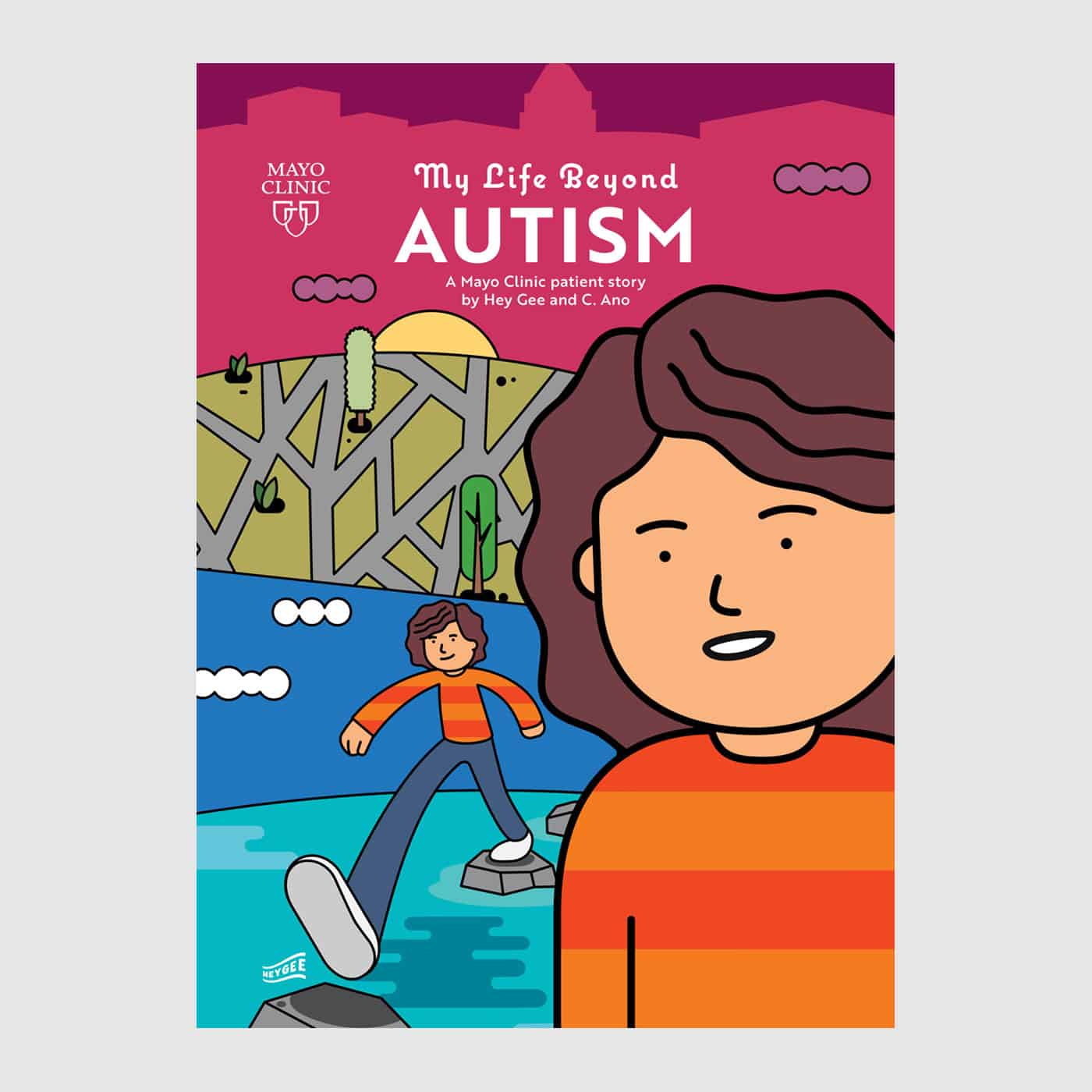
Relevant reading
My Life Beyond Autism
Tracy likes to draw, make movies and play, just like other kids. She also has autism spectrum disorder. This means she processes many everyday situations differently, such as making friends. Over time, she’s learned tricks for communicating and coping when things are hard for her. Follow along as Tracy gives…

